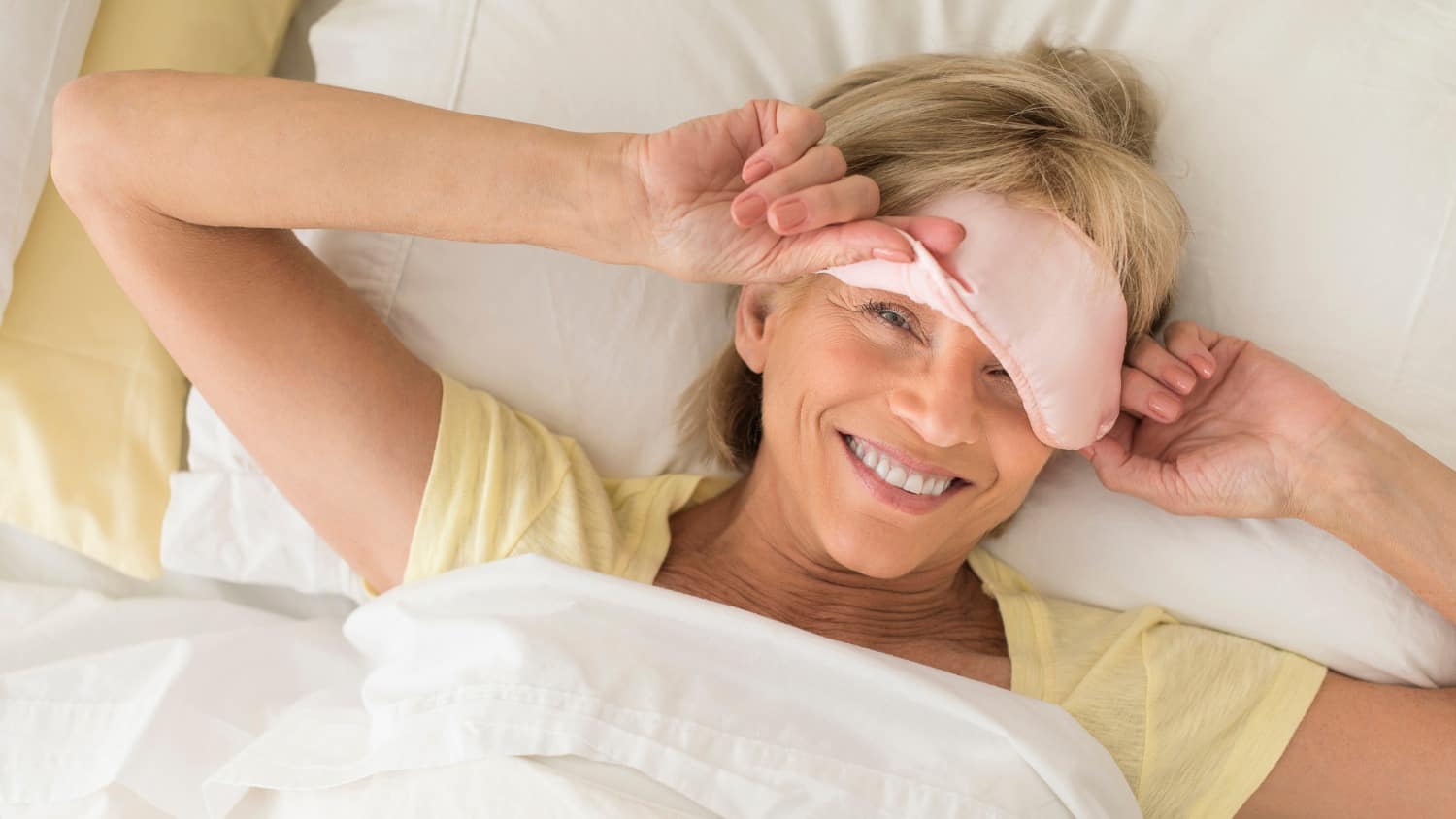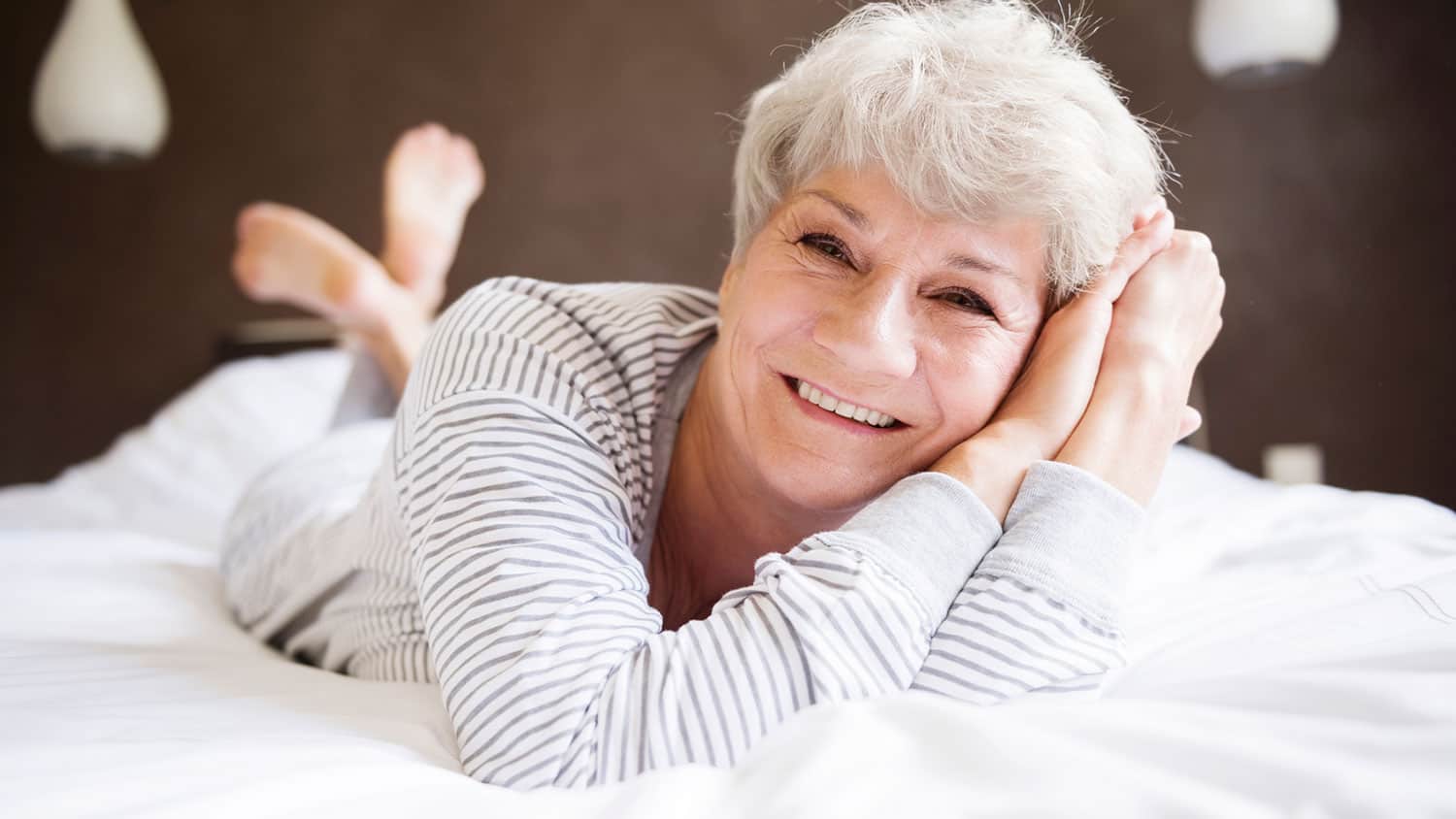
Need to Improve Your Slumber? This Expert’s Advice Works Wonders for Women Over 60
According to Dr. W. Chris Winter, author of The Sleep Solution, most physicians receive less than two hours of training about the entire field of sleep during medical school. And yet, it is one of the most common problems brought up by patients.
But the good news, according to Dr. Winter, is that sleep is one of the three main pillars of good health (along with diet and exercise) over which we are able to exert some control.
A Recent, Interesting Sleep Discovery
One of the most fascinating medical discoveries related to sleep was made in 2015 when researchers revealed that the glymphatic system in the brain has a way of removing waste and works far better when we are sleeping.
And, it works far more efficiently when we sleep on our side. So, they found, sleeping on your side could help reduce your risk of developing Alzheimer’s disease.
How Much Sleep Do We Need?
Sleep need is as individualized as caloric need. According to Dr. Winter, if you sleep well, feel well, and don’t have symptoms of excessive sleepiness, whatever amount of sleep you are getting is probably okay.
And, as we all know, sleep needs change over a lifetime, and throughout life, our sleep need declines. Many of us who are older need only seven to eight hours of sleep.
Why and How We Sleep
Two main systems in our body work to produce sleepiness: the homeostatic system and the circadian system.
A chemical called adenosine mediates the homeostatic system of sleep. The longer you’re awake, the more adenosine collects in your brain, the more likely you are to be sleepy. Physical exercise increases adenosine, so the harder you exercise, the more likely you are to be sleepy.
Why is it that caffeine keeps us awake? It turns out that caffeine blocks adenosine, which is why it does a good job of keeping us awake.
Melatonin is produced in conditions of darkness, and as bedtime approaches, a big release of melatonin occurs and sleep soon follows.
Stages of Sleep
Sleep has three important stages. Light sleep serves as the passageway between wakefulness and deep sleep. Deep sleep is our most restorative sleep, but in order to get there, you have to pass through light sleep.
It is also uncommon to transition directly from deep sleep to dream sleep. Thus, after light sleep you either move into deep sleep or dream sleep.
REM, or Rapid Eye Movement, sleep is almost always dream sleep, but it can occur during deep sleep as well. REM sleep comes in 20- to 40-minute cycles four to five times a night, and we usually spend a quarter of our sleep in REM sleep, which is important for memory and mood regulation.
Each of these cycles typically becomes longer as we progress through the night. Dream sleep usually begins approximately 90 minutes after an individual falls asleep – after a brief stay in light sleep and a cycle of deep sleep.
If transitions to deep sleep and dream sleep are disrupted, an individual will spend more time than normal in a second stage of light sleep which is not terribly restorative.
Adults typically spend 25% of their night in deep sleep with most of it occurring during the first half of the night. This is the time of greatest growth hormone production which helps our body stay young and healthy and perform better.
It also helps strengthen our muscles and fortify our bones, helps us recover from injuries and boosts our immune function. Unfortunately, the amount of deep sleep declines as we age and so, too, does our growth hormone production.
Creating the Best Sleep Environment
Most of us already know that we need to eliminate electronics from our bedroom and turn off electronic devices several hours before going to sleep.
If this is not possible, there are apps that will reduce both the amount of light and the quality of the light you are exposed to or you can buy UV blue-blocker glasses.
It’s also extremely important to sleep in an absolutely dark, cool, and noise-free environment. Here’s an interesting, quick test to see if your bedroom is the best sleep environment possible:
- Go into your bedroom, close the door, shut the blinds and curtains, and turn off the light.
- Put your hands in front of your face. Can you see them?
If yes, your room isn’t quite dark enough so you may want to consider your options to make it darker.
How We Can Help Bring on Sleep
Additionally, we know that alcohol, nicotine, and caffeine negatively impact our sleep. Also, it’s best not to eat any food two to three hours before going to bed.
Food high on the glycemic index produces sleepiness, so if you must consume food later in the evening, eat dried fruit, cereal, or bananas. Foods high in tryptophan and magnesium can also be helpful. And hot chamomile tea or passionflower tea also help induce sleep.
Studies indicate that lavender can help with sleep, so spraying diluted lavender oil in your bedroom or on your pillow may also be beneficial. In addition, there are white noise and sound machines that provide a variety of white noise background sounds to help you fall asleep.
Identifying and managing stress through meditation, relaxation training, and/or cognitive therapy is important for those dealing with anxiety.
What’s the Most Important Thing We Can Do to Improve Our Sleep?
When asked about the most important thing we can do to help our sleep, Dr. Winter’s answer may surprise you. But he never waivers from this advice: the most important thing you can do is have a consistent wakeup time in the morning.
How has your sleep quantity or quality changed as you’ve gotten older? Have you made any changes that have helped improve your sleep? If so, please share what you’ve done that’s helped you. Let’s have a conversation!
Tags How to Sleep Better






